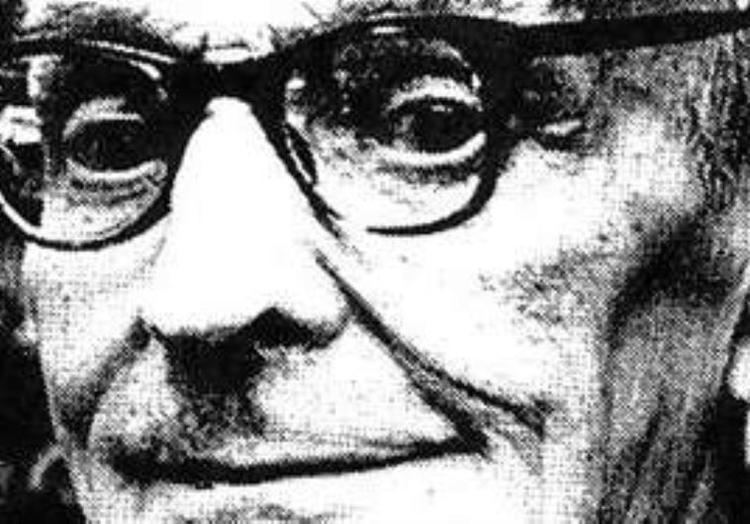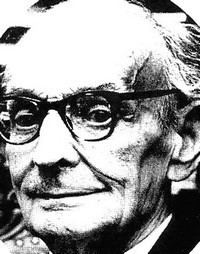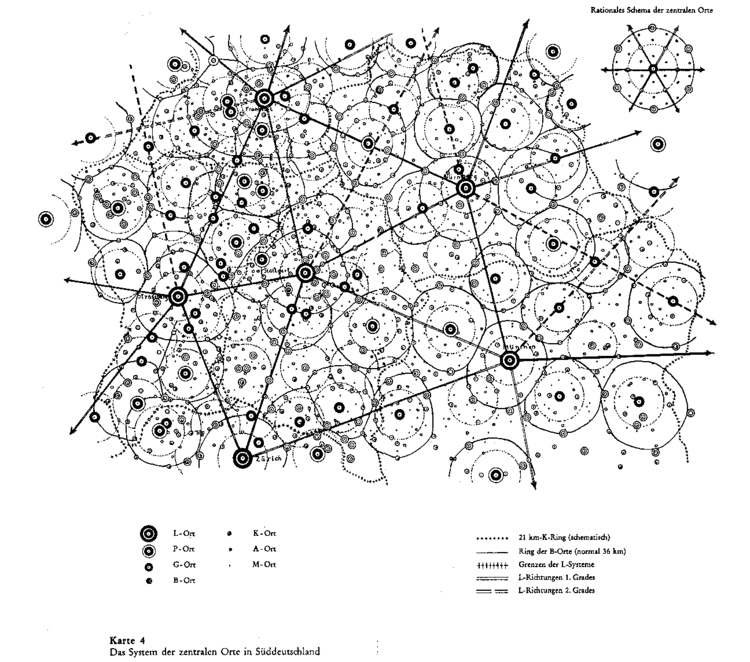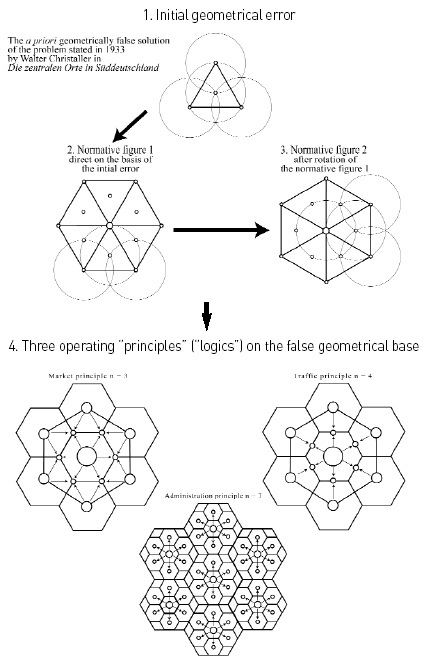Name Walter Christaller Role Geographer | Parents Helene Christaller Awards Victoria Medal | |
 | ||
Born 21 April 1893 Berneck, Württemberg Died 9 March 1969 (aged 75) Königstein im Taunus, Hesse Nationality German Known for Central place theory Fields Geography Doctoral advisor Robert Gradmann Similar Johann Heinrich von Thünen, Alfred Weber, John Maynard Keynes | ||
Central place theory by walter christaller
Walter Christaller (April 21, 1893 – March 9, 1969), was a German geographer whose principal contribution to the discipline is Central Place Theory, first published in 1933. This groundbreaking theory was the foundation of the study of cities as systems of cities, rather than simple hierarchies or single entities.
Contents
- Central place theory by walter christaller
- 6 Thorie des places centrales avec Walter Chrstaller
- Life
- References

6- Théorie des places centrales avec Walter Chrstaller
Life

Walter Christaller was born to Erdmann Gottreich and Helene Christaller, an author of Christian-themed children's novels at Berneck in Germany. His paternal grandfather Johann Gottlieb Christaller was a linguist and a Christian missionary in West Africa.

Before 1914, Christaller began studies in philosophy and political economics and subsequently served in the German army during World War I. He was homeschooled and educated at the Universities of Heidelberg and Munich. During the 1920s he pursued a variety of occupations. In 1929 he resumed graduate studies that led to his famous dissertation on Central Place Theory, which he published as the Die zentralen Orte in Süddeutschland (The Central Places in Southern Germany), in 1933.

At the end of the 1930s he held a short-lived academic appointment, but then joined the Nazi Party in 1940. He moved into government service, in Himmler's SS-Planning and Soil Office, during the Second World War. Christaller’s task was to draw up plans for reconfiguring the economic geography of Germany's eastern conquests (Generalplan Ost) – primarily Czechoslovakia and Poland, and if successful, Russia itself. Christaller was given special charge of planning occupied Poland, and he did so using his central place theory as an explicit guide.

After the War he joined the Communist Party and became politically active. In addition, he devoted himself to the geography of tourism. From 1950 forward, his Central Place Theory was used to restructure municipal relationships and boundaries in the Federal Republic of Germany and the system is still in place today.

In 1950 Walter Christaller, together with Paul Gauss and Emil Meynen, founded the German Association of Applied Geography (DVAG). The Walter Christaller Award for Applied Geography is named after him.
He died in Jugenheim, Germany on March 9, 1969.
